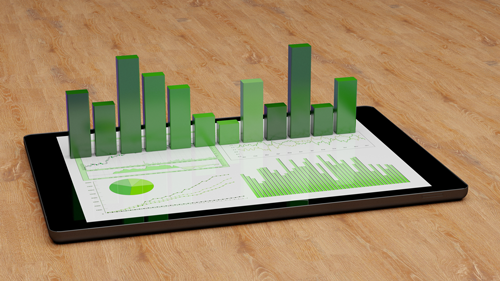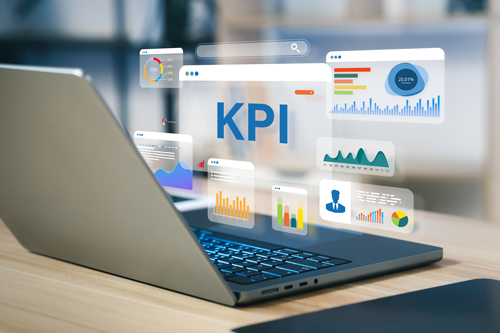Guidance on environmental KPIs
Environmental key performance indicators (KPIs) are quantitative measures of how well an organisation is meeting its key business environmental objectives and targets. Sounds pretty straight forward, but often they are not.
In this blog, I explain what environmental key performance indicators (KPIs) are, how they should be defined, measured and monitored (and the challenges associated), and their value in measuring success.
What are environmental key performance indicators (KPIs)?
Organisations set environmental objectives and targets to achieve intended outcomes. Whether that be in relation to meeting their environmental performance requirements, meeting ISO 14001:2015 requirements for their Environmental Management System, reducing their environmental impact or improving their sustainability efforts.
Environmental objectives are the measurable improvement goals or benchmarks you want to reach. Environmental KPIs are measurable indicators used to track the progress towards reaching those goals or benchmarks.
For example, you might be focusing on increasing energy efficiency in your offices and have an objective of reducing lighting costs by 50%. Your target may be to “replace 70% of the lightbulbs in the office with LED lightbulbs over the next 12 months”. Your performance indicator for this goal could be tracking the number of lightbulbs replaced across the office.
As you monitor your KPIs, you gain a better understanding of how you are tracking towards your goal and whether any improvements or adjustments need to be made to your operations or your environmental KPIs.

Defining your environmental KPIs
To gather the most relevant environmental performance data, make sure your environmental KPIs are:
- relevant, specific, realistic, practical and time bound
- cost effective to measure
- reproducible and comparable over time
- a direct physical measurement (where possible)
- expressed in terms of units of production (where applicable)
- reflective of your environmental objectives and targets, your business strategy and stakeholder expectations.
Some examples of environmental KPIs for common environmental impacts
Emissions to air, water or land
- Greenhouse gas emissions – carbon dioxide (direct and indirect emissions), or methane gas emitted to air
- Nutrient or organic pollutant discharged into water and/or land
Energy consumption
- Electricity used
- Fuel usage
Resource use
- Water consumption from mains or bores
- Quantity of waste disposed to landfill
- Quantity of waste sent for recycling or reuse
- Paper usage
Environmental protection measures
- Environmental audit scores
- Effectiveness of programs to reduce climate related risks
- Effectiveness of employee incentive plans
Sources of quantitative information that may be useful
- Energy bills – kilowatt hours (kWh)
- Water bills – litres per day (L/day)
- Purchasing records – e.g. reams of paper purchased
- Waste management bills – e.g. waste collections per month
- Travel receipts – e.g. flights (or flight-km) per month

Monitoring and measuring your environmental KPIs
Once you have defined your environmental KPIs, the next step is to setting up parameters for monitoring and measurement.
You might want to consider:
- How is the monitoring and measuring going to be done?
- Will instrumentation or third party data sources be required?
- Who will do the monitoring and how often will it be done?
- Who will analyse and evaluate the KPI data?
- When will take remedial action (if required)?
- How will the results be communicated (internally and externally as required)?
Some challenges in implementing effective measurement and monitoring
Let’s say we set a target of reducing waste to landfill by 10%. We then need to decide what can be measured to gauge the progress towards our 10% reduction. What reliable data is available to measure waste quantities?
This can be a challenge because, at most sites, waste is not weighed and reports from waste transporters are usually estimates based on the volume of the bin, not the amount of waste contained in it. Full or empty, it is recorded at x kg.
Usage of consumables should be easier to measure, but there are complications here too. If your organisation is growing, efficiency savings may be cancelled out by increases in employees, plant or office space. This can be overcome simply by measuring resource use against an appropriate unit of production. For example, water or energy use can be reported “per person” or “per 100 square metres of factory space” or “per 1,000 products sent to market”. Vehicle fuel use could be measured per tonne of product delivered.
Verify the accuracy of measurement data
Be mindful if using instrumentation or third party data sources (e.g waste transporter) to capture data for your environmental KPIs. Consider:
- Is the third party data reliable or is it somebody’s guesswork?
- Are the measurement devices calibrated?
- Is some data inaccurate purely due to its very nature, e.g. number of near misses reported?

Measuring success with environmental KPIs
Environmental KPIs are critical for measuring progress in environmental improvement work. Environmental indicators should reflect the organisation’s objectives and improvement priorities. The focus of improvement work will vary from one industry to another, and from one company to another.
For example, some businesses that have activities, products or services that present low environmental risks might focus on reduction of waste (and the saving that goes hand-in-hand with that) and the implementation of energy efficiency schemes.
On the other hand, businesses with activities, products or services that pose medium to high environmental risks might focus on reducing greenhouse gas emissions, using more renewable energy and renewable sources in production, and compliance to environmental legislation and industry standards.
Businesses certified to ISO 14001:2015 have a requirement, in Clause 9.1.1, to determine criteria (in the form of appropriate performance indicators) for evaluating their environmental performance and effectiveness of their Environmental Management System.
The positive business impacts from implementing KPIs
No matter the environmental issues facing an organisation, or the sustainable future they wish to achieve, environmental KPIs provide valid, real-time and quantifiable mileposts on the road to success.
KPIS can be used to:
- measure and demonstrate progress in achieving environmental objectives
- compare your environmental performance to industry standards, best practices using, for example, sustainability reporting or climate related reporting from similar organisations or even the global reporting initiative.
- communicate to stakeholders your commitment to social responsibility, addressing climate change and sustainable development.
- align investment decisions in relation suppliers, products or services with your environmental objectives and targets and drive a more sustainable economy.

Measuring success with environmental KPIs
Environmental KPIs are critical for measuring progress in environmental improvement work. Environmental indicators should reflect the organisation’s objectives and improvement priorities. The focus of improvement work will vary from one industry to another, and from one company to another.
For example, some businesses that have activities, products or services that present low environmental risks might focus on reduction of waste (and the saving that goes hand-in-hand with that) and the implementation of energy efficiency schemes.
On the other hand, businesses with activities, products or services that pose medium to high environmental risks might focus on reducing greenhouse gas emissions, using more renewable energy and renewable sources in production, and compliance to environmental legislation and industry standards.
Businesses certified to ISO 14001:2015 have a requirement, in Clause 9.1.1, to determine criteria (in the form of appropriate performance indicators) for evaluating their environmental performance and effectiveness of their Environmental Management System.

The positive business impacts from implementing KPIs
No matter the environmental issues facing an organisation, or the sustainable future they wish to achieve, environmental KPIs provide valid, real-time and quantifiable mileposts on the road to success.
KPIS can be used to:
- measure and demonstrate progress in achieving environmental objectives
- compare your environmental performance to industry standards, best practices using, for example, sustainability reporting or climate related reporting from similar organisations or even the global reporting initiative.
- communicate to stakeholders your commitment to social responsibility, addressing climate change and sustainable development.
- align investment decisions in relation suppliers, products or services with your environmental objectives and targets and drive a more sustainable economy.
Positive employee behaviour from implementing KPIs
Environmental KPIs can also be used to incentivise employees. But this will happen only if individual employees or teams believe they are making a difference and contributing to the overall result. Therefore, try to select localised KPIs.
For example, instead of reporting results for the whole of your organisation, considering reporting results for individual teams or sections or even departments. Of course, to be able to do this, you need segment the measurement data. This may mean, for example, installing additional electricity or water metres so a team, section or department’s usage can be individually measured.